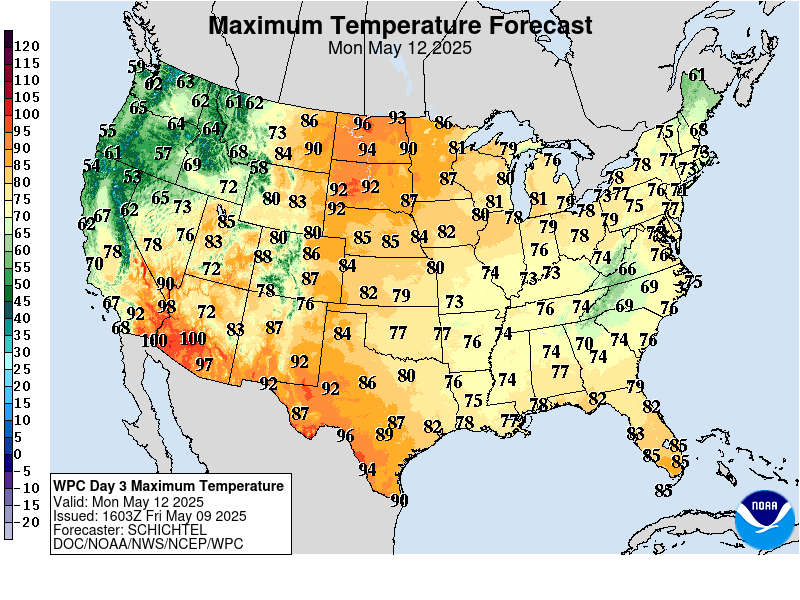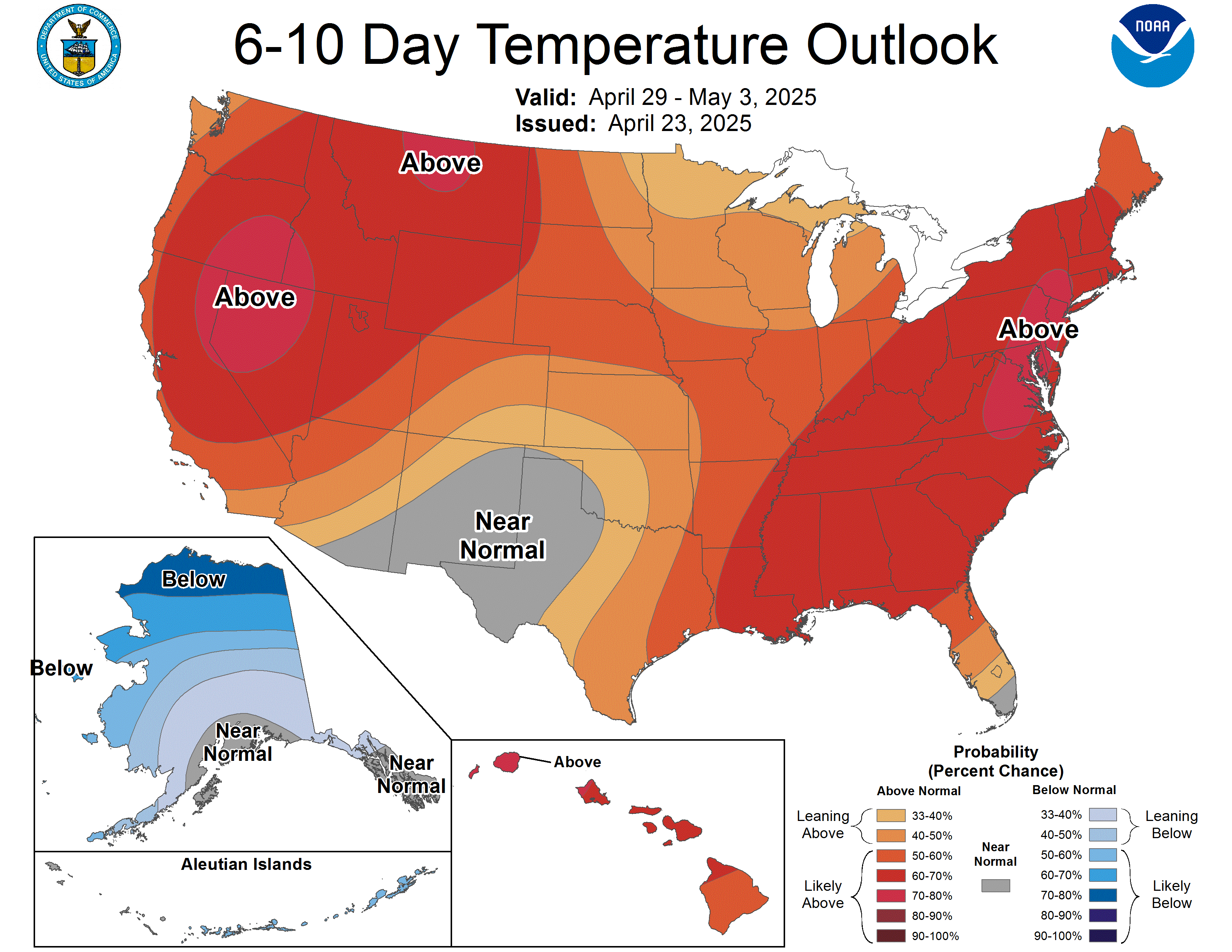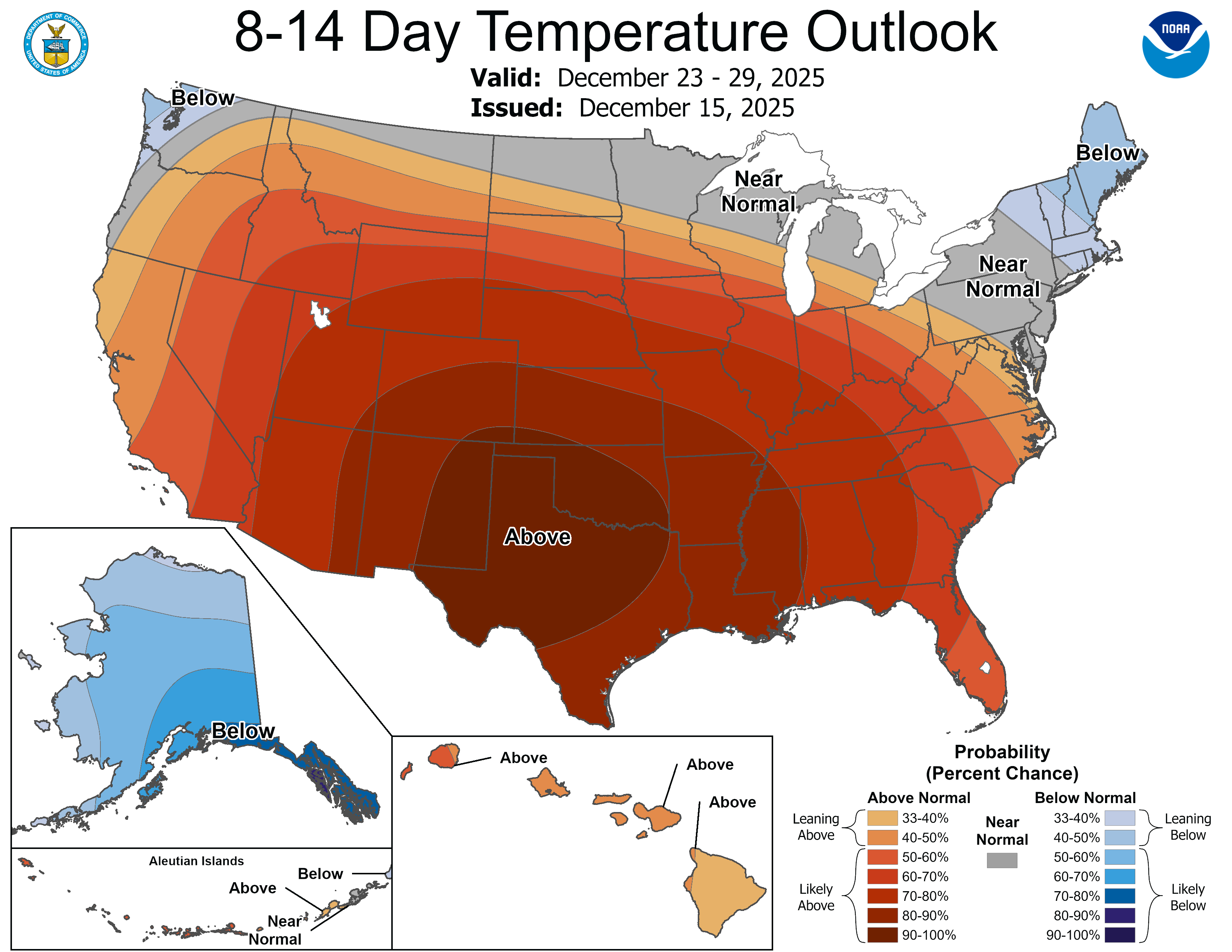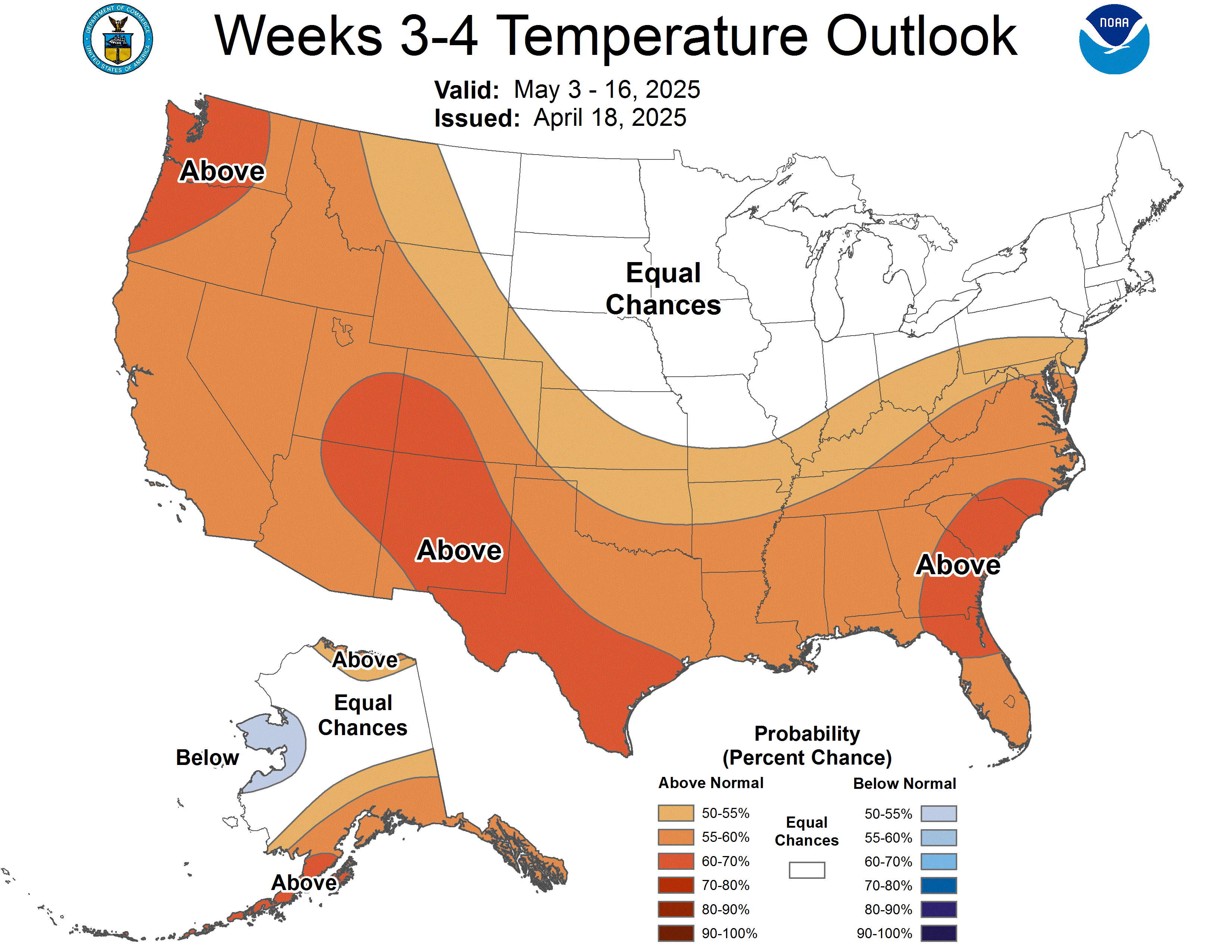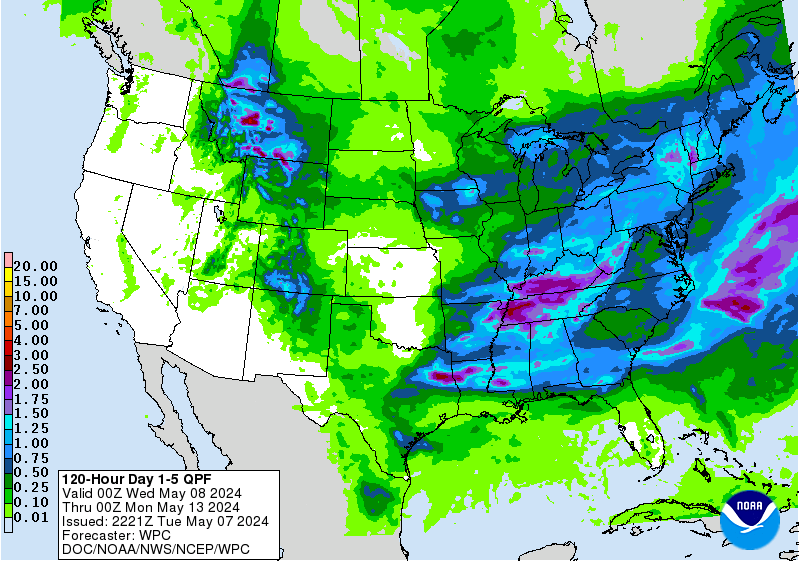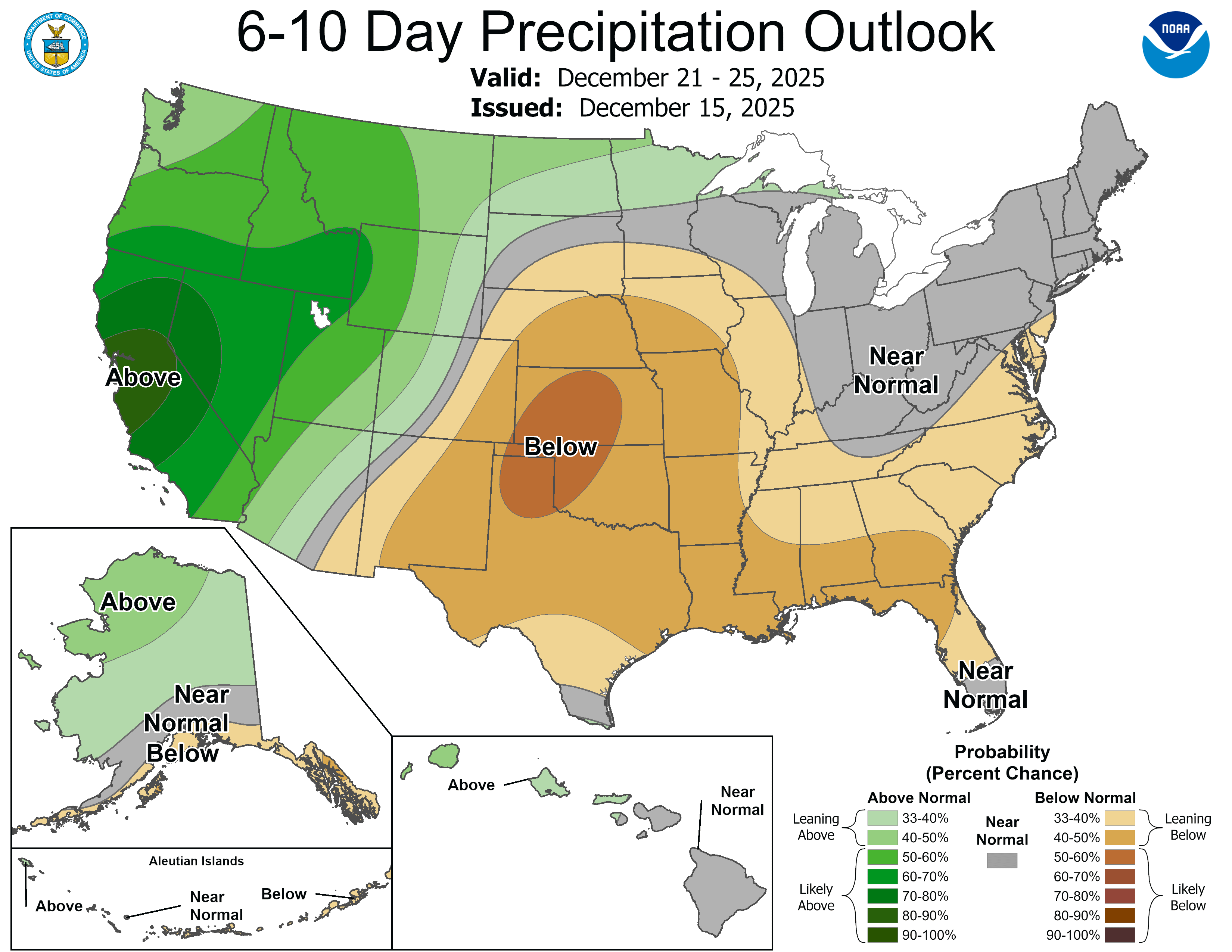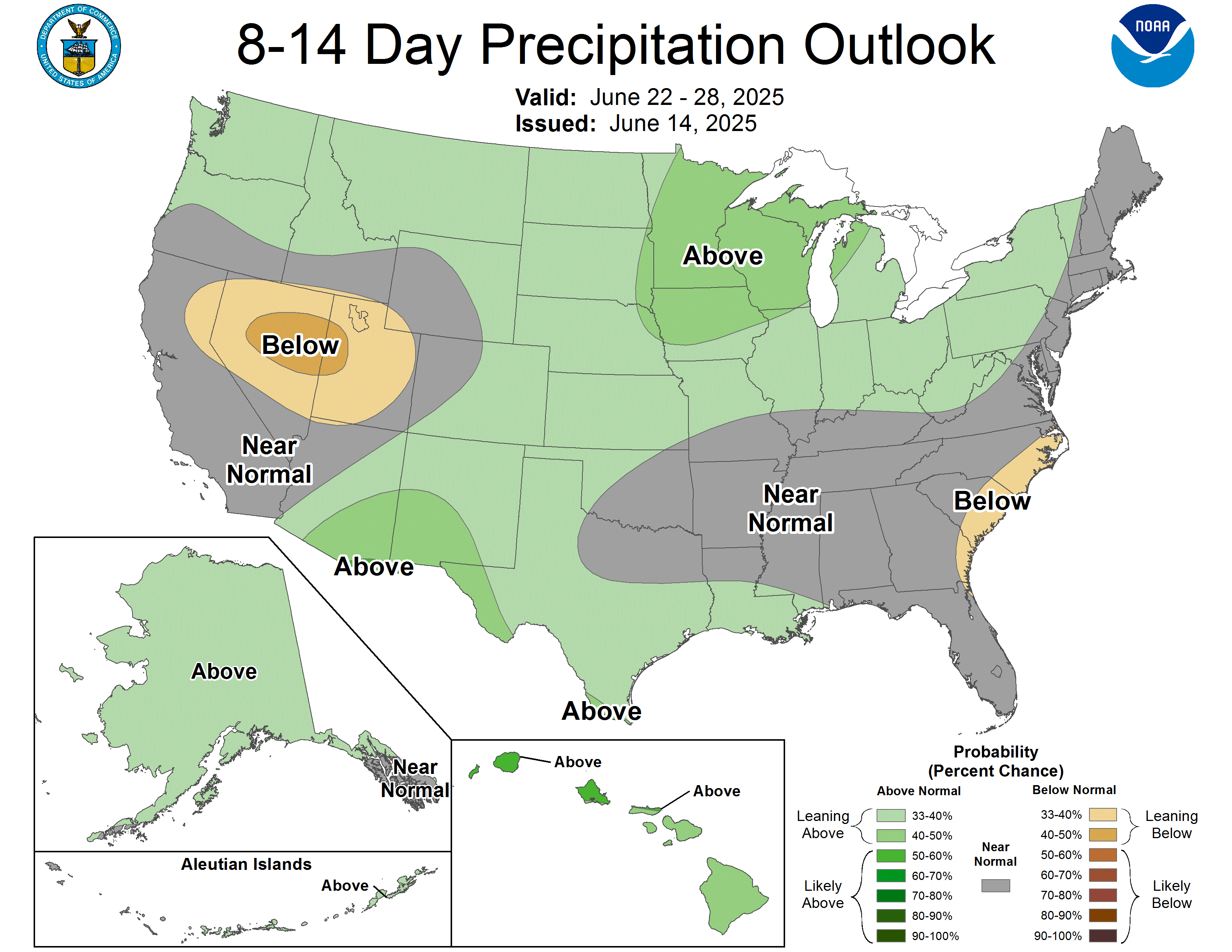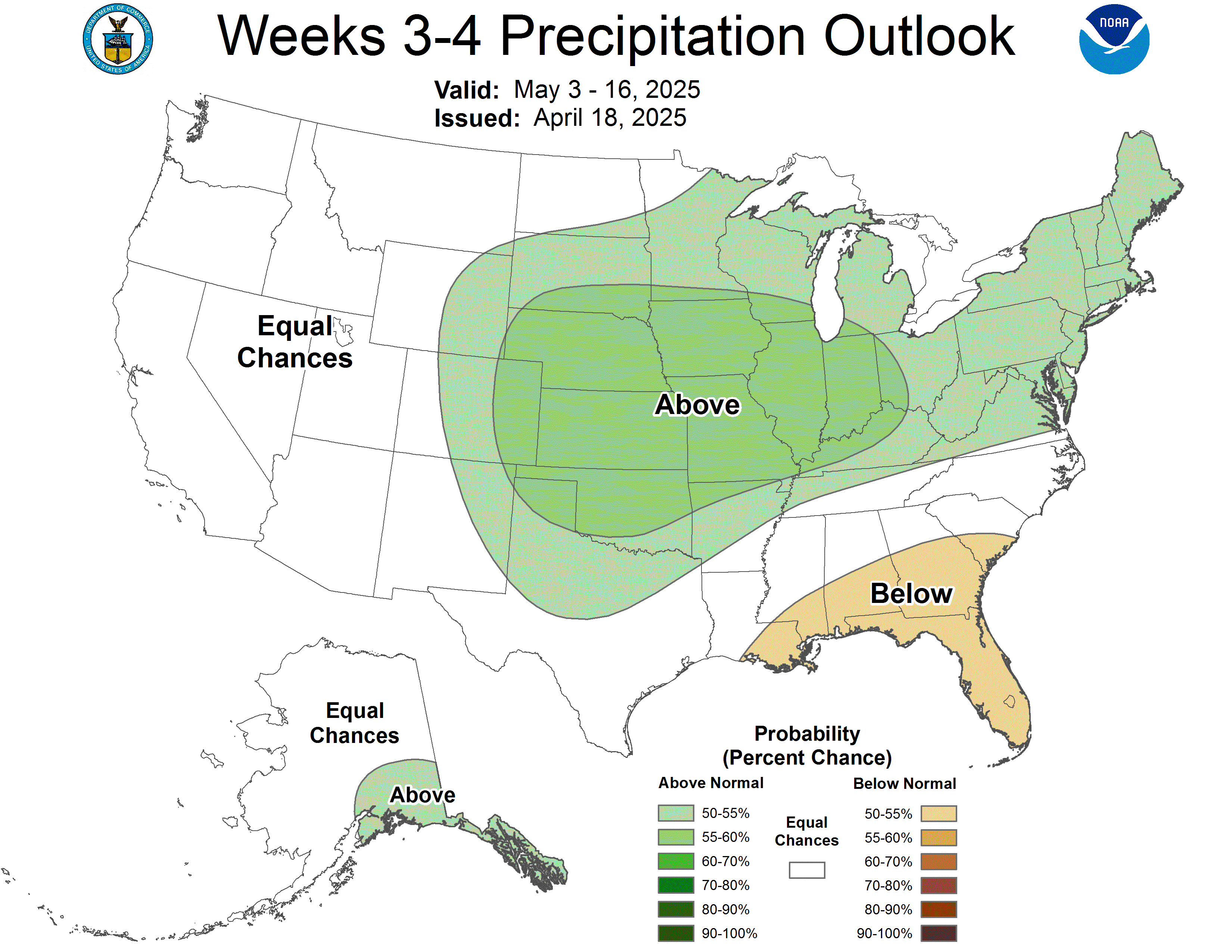Written by Sig Silber
Updated at 9 pm EDT July 2, 2021 to incorporate the Week 3 – 4 Forecast.
At the end of every month, NOAA issues an update of their Early Outlook for the following month – in this case July. The Early Outlook as usual, together with their Four-Season forecast, was issued on the Third Thursday of the month. Now, thirteen days later, there have been some significant changes. The July Drought Forecast was also issued today and is quite interesting. We expected a rotation of the drought area at some point but it will not be more than a tease unless it persists into autumn. We shall see.

Some housekeeping: On June 17, 2021, we published Part I of our analysis of the NOAA Four – Season Outlook and that can be accessed here. In that report, the July 2021 Early Outlook was issued. This article presents the NOAA update of their Early temperature and precipitation Outlooks for July and the Drought Forecast for the month of July.
Please share this article – Go to the very top of the page, right-hand side for social media buttons. Also, feel free to send this article to anyone you feel will benefit from it. You can find the latest version of all our weather articles by consulting the Directory by clicking here and then clicking on the latest version of the article which is of interest to you.
First, we will compare the NOAA Early Outlook for July 2021 with the newly issued update.
Early Outlook Temperature

Updated Temperature Forecast

Early Outlook Precipitation

Updated Precipitation Forecast

Here we compare the prior forecast to the new forecast as above but in a more compact format. This is simply the maps already presented organized in a different way to make comparison easier. Later, we show the forecast for almost the entire month broken into four parts.
| June 17, 2021 Forecast for July, 2021 | June 30, 2021, Forecast for July 2021 | |
| Temperature | ||
| Precipitation |
Here is the discussion released with the forecast.
30-DAY OUTLOOK DISCUSSION FOR JULY 2021
The updated outlook of temperature and precipitation for July 2021 reflects the official outlooks from WPC, CPC, and NHC, latest model guidance, soil moisture conditions, and the status of well-known climate oscillations. Dry conditions are forecast to continue across much of the western and northern CONUS, further supporting an outlook favoring above normal temperatures from the Southwest to the Northwest and eastward to the Great Lakes and Northeast. The highest odds are across the northern Intermountain West, where outlooks from the short-term to Week 4 all highlight enhanced odds for below normal precipitation, continuing to tip the feedback cycle toward above normal temperatures. Early frontal activity, combined with favored above normal precipitation (as indicated in many models), backed by recent above normal soil moisture, favors below normal temperatures across the Southern Great Plains and portions of the Southeast, except Florida.
Across the Southwest, an early moisture surge is likely to bring rains to southern Arizona and New Mexico. The latest CFS runs indicate a push of moisture into the Great Basin during the middle of the month, but that signal is weaker in recent ECMWF runs, so slightly enhanced odds of above normal precipitation, or EC, is the resultant outlook for much of California, Nevada, and portions of Utah. Below normal precipitation is favored to continue across the Pacific Northwest and Northern Rockies, with the first two weeks likely to be dry. Below normal precipitation is also favored for portions of the Northeast as there is little chance for moisture to stream northward. Across the Southeast, early frontal activity and the potential for tropical moisture favor above normal precipitation. An MJO signal moving into phases 3 and 4 would tend to reduce tropical activity across the Gulf of Mexico, so that mitigates the odds across the Southeast and Gulf Coast. The Southern Great Plains are likely to remain wet due to a combination of moisture from the Southwest and the western end of a frontal boundary.
Visual Consistency Testing.
It is useful to see how the full-month forecast fits with the set of partial-month forecasts that we have. These will continue to update in this article. It is important to remember that with the partial-month forecasts, we generally have about 25 days of the subsequent month to look at when we do this at the end of the month as we are doing now. It depends on what day of the week the month ends. So this month, which ended on a Wednesday, when we first published we had short-term forecasts that covered 23 of the 31 days in July so we were in less good shape than usual to see if the whole was equal to the sum of the parts. But we have now updated this report on Friday and now we are in perfect shape to do the visual consistency testing.
First Temperature
And Precipitation
Here is the discussion that was issued with the Week 3 – 4 Forecast.
ENSO-neutral conditions continued across the equatorial Pacific. While the RMM-based MJO index indicates an enhanced signal over the western Indian Ocean, the CPC velocity potential based index is weak and shows evidence of Kelvin wave activity. The incoherent projection observed on the RMM index is likely due to the superposition of various Kelvin waves across the globe. Based on these observations, we do not anticipate ENSO and MJO activity to have substantial impacts on the Week 3-4 pattern. The multiple linear regression (MLR) statistical tool based on contributions from ENSO, MJO, and long term trends almost entirely reflects the long term trends. Therefore, dynamical model consensus plays a greater role in this week’s outlook than the statistical guidance.
Dynamical model 500-hPa anomaly forecasts are characteristically weak as we approach the middle of the summer season. The CFS depicts ridging over the eastern half of the CONUS, while the GEFS, ECMWF, and JMA maintain ridging over the Northwest and northern Plains, which is similar to the forecast Week-2 pattern. The differences in these model height patterns do not appear to result in substantial differences in the surface temperature forecasts, which exhibit fairly remarkable consistency. All of the dynamical models persist the pattern favoring above-normal temperatures for the West and along the Northern Tier, and indicate enhanced chances for above-normal temperatures across New England. It is possible that dry soils in the Northwest may be contributing to a feedback that increases the favorability for hot conditions. Additionally, dynamical model forecasts for Week-3 show enhanced chances for temperatures exceeding the top decile of the 1991-2020 climatology across the interior Northwest and Northern Great Plains, highlighting a risk for excessive heat. In contrast, below-average temperatures are favored across the Central Gulf Coast, with differences in the extent of the enhanced chances for below among the dynamical models. A manual blend of dynamical and statistical model guidance shows enhanced probabilities for below-average temperatures extending from the southern Four Corners states to Florida. Further north, enhanced chances for above-normal temperatures return to New England for Week 3-4 following a period of favored below-normal temperatures during days 6-10. Across Alaska, the outlook slightly favors below-average temperatures across the southern third of the state, with above-average sea surface temperatures aiding a slightly enhanced chance for above-average temperatures along the North Slope region.
The precipitation outlook is also based on dynamical model consensus. Most of the models depict enhanced monsoon precipitation across the Four Corners states and western Texas, while a drier signal persists to the north across the Northwest and northern Plains. Similar to the Week-2 forecast, below-average rainfall is favored for the immediate central Gulf Coast region and the Florida peninsula, but confidence is low due to the potential for tropical activity. The manual blend exhibits a clear signal favoring above-average precipitation extending from the Tennessee Valley northeastward across New England, as well as above-average precipitation for western Alaska. The outlook favors below-average precipitation for southeastern Alaska, including the Panhandle.
Dynamical model guidance from the SubX MME strongly favors above-normal temperatures for Hawaii. The precipitation guidance is more mixed, though slight probabilities for below-average precipitation exist across the northwestern islands.
Sometimes it is useful to compare the three-month outlook to the forecast for the first of the three months. It shows how much the pattern changes over the three-month period.

One can mentally subtract the First-Month Outlook from the Three-month Outlook and create the Outlook for the last two months in the three-month period.
And with respect to drought, this was also issued on June 30, 2021
Latest Monthly Assessment – During June, widespread heavy rainfall across western Texas, eastern New Mexico, and eastern Colorado brought drought relief, while substantial drought expansion occurred across the northwestern quadrant of the CONUS under a record shattering heatwave. Further east, a swath of rainfall clipped the southern edge of the drought areas of the western Corn Belt while bringing more substantial improvements to Michigan. Heavy rainfall, partly in association with tropical cyclone activity, brought drought relief to the mid-Atlantic, while persistent dryness caused continued degradations across northern New England. During July, the updated precipitation outlook from CPC favors dryness across much of the Northern Tier except for the Great Lakes, areas where drought is entrenched, while above-average rainfall is favored across the Four Corners eastward to the mid-Atlantic states, where little drought is present. This pattern may help to continue easing drought conditions for southern Arizona and much of New Mexico, while the recent heavy rainfall coupled with additional rains may bring relief to Michigan and parts of Wisconsin and northern Illinois. Drought persistence, intensification, and expansion is favored for the remainder of the West, northern Plains, and New England, however, due to anticipated heat and weak precipitation signals. Outside of the CONUS, tropical convection slightly favors continued drought improvement for Puerto Rico, while a drier signal makes drought expansion more likely across Hawaii. No drought development is anticipated across Alaska.
Has the Drought Forecast changed?
| June 17th Seasonal Outlook | June 30th Single Month of July Outlook |
 |  |
Is there “persistence” in the forecast?
Looking back on June 2021 to relate the forecast for July to the actuals in June.
First June 2021 Temperature (29 out of 30 days).
And then June Precipitation (29 out of 30 days).
We then show the new forecast and the prior month’s actuals (less one day) side by side.
| Prior Month (usually missing one day) | Forecast for current Month | |
| Temperature | ||
| Precipitation |
Conclusion
The purpose of this article was to present the updated Outlook for July 2021 and compare it with the Early Outlook. It is not to critique the updated Outlook for July based on our opinions but we point out possible inconsistencies if we find them. We have assessed the extent to which the monthly outlook seems to fit with the other forecasts provided by NOAA. In reality, all forecasts are obsolete when issued as the situation changes day by day or six hours by six hours i.e. each new model run. In our other articles, we continually examine the current forecasts from NOAA including Day 1- 5, 6-10, 8-14, and Week 3 and 4. So we are continually looking at approximately 25 days into the future.
On July 8, 2021, IRI/CBC will issue their ENSO forecast and we will present that and critique it. We do not expect any surprises with the NOAA July 8, 2021 Report. It is an ongoing process and we attempt to provide our readers with the best current assessment of the next approximately 25 days (except when we cover the Four-Season Analysis or medium-frequency cycles such as ENSO in which cases we are looking farther out than 25 days), so our analysis is pretty much ongoing. We also publish a “LIVE” Weather Article which updates in real-time to reflect NOAA Weather Headlines and for those interested provides detailed information down to current warnings in place. All of our reports including past versions of these reports can be located via the Directory/Archive which can be accessed here.



